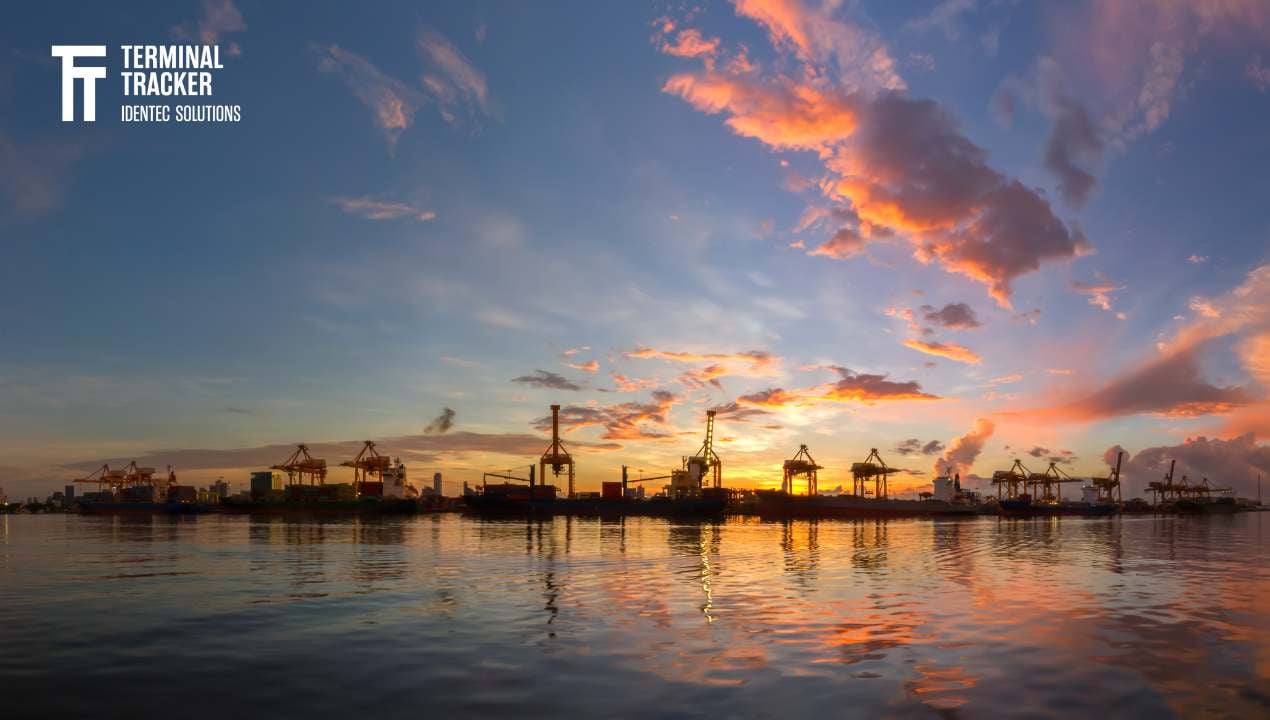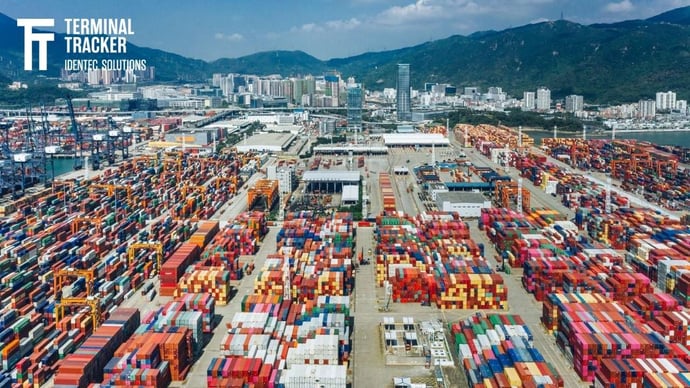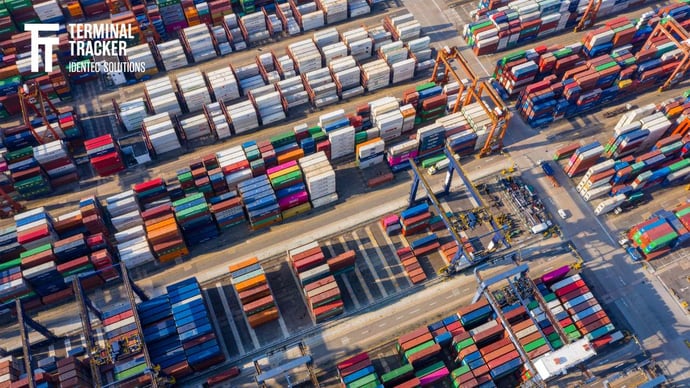The green port concept
| Written by Mark Buzinkay
The concept of a green port is gaining momentum in the shipping industry. This sustainable approach to managing cargo operations can help make container terminals more efficient and profitable, while also reducing their environmental footprint.
In this blog post we'll explore the different definitions of and initiatives for Green Port concepts, enabling container terminal managers to embrace eco-friendly operational strategies to maximize profits and reduce their impact on the environment. Come along with us and learn how you can incorporate the green port concept into your daily operations!

No video selected
Select a video type in the sidebar.
With increased regulation from global bodies like IMO and Port Authority Perspectives, as well as growing customer demand for responsible handling practices, getting on board with green ports has never been more important.
What is The Green Port Concept?
A green port goes beyond traditional port operations by investing in environmentally friendly and sustainable practices in all aspects of the maritime industry. Although each port has its interpretation of what constitutes sustainable operations, there are innovative green technologies and low or zero-carbon alternatives to fossil fuels and energy-intensive terminal equipment available. On a global scale, international maritime and shipping coalitions are uniting supply chain stakeholders to reduce power consumption and carbon emissions collectively. The following aspects are typical elements of green port concepts:
Electricity and Fuels
One promising solution for reducing emissions in ports is the expansion of electricity-powered operations. Ports across the world are exploring the implementation of shore power systems, which enable docked vessels to connect to onshore power units instead of relying on generators and consuming fuel. Additionally, electrified zero-emission yard equipment, such as electric RTG cranes, is gaining popularity as ports strive to decrease their carbon footprint.
As part of their efforts to reduce emissions, ports worldwide embrace electrified zero-emission yard equipment. Electric RTG cranes are leading the way. This trend is expected to continue as more ports seek to decrease their carbon footprint. Meanwhile, stakeholders in the port community are also investing in electrification. For example, trucking providers launch 100% electric solutions that cost the same as diesel alternatives, demonstrating that sustainable solutions can be both cost-effective and environmentally friendly.
Ports have the potential to significantly reduce their carbon footprint through the use of low and zero-emission fuels in various areas, such as vessels, cargo-handling equipment, and transportation. For example, green hydrogen, produced through renewable electrolysis, is a zero-emission fuel, while blue hydrogen, generated through fossil fuels, captures and safely stores carbon emissions. In addition, with the development of hydrogen-powered cargo-handling equipment and potentially hydrogen-fueled vessels in the future, ports can make strides towards a sustainable future.
Investments in hydrogen by supply chain stakeholders continue to gain momentum as autonomous hydrogen-powered trucks will be deployed in fleets by 2022. Meanwhile, the demand for Liquefied Natural Gas (LNG) fuel for vessels surges globally, thanks to its ability to reduce nitrogen oxides and greenhouse gases by 85%. The port's LNG bunkering system is set to embrace carbon-neutral variants of LNG, such as liquid biogas from organic waste or liquid synthetic methane from green hydrogen and CO2 capture. Vessels can also leverage renewable fuel sources like methanol, ammonia bunkering, and biofuels.
Intermodal
Rail freight is emerging as a greener and more sustainable option for transporting goods, especially when compared to diesel-powered trucks used in terminal yards. The Port of Valencia is leading the way in promoting intermodal transport and has already slashed its carbon emissions by 30% between 2008 and 2019, despite seeing a steady increase in cargo throughput.
Inland rail freight is gaining traction among stakeholders as a greener and more sustainable transportation option. The trend is exemplified by a direct rail service connecting Trieste, Italy and Ludwigshafen, Germany, by shipping line MSC and the introduction of additional intermodal cargo services from Kiel to Verona in northern Italy. Many in the industry advocate for investment in intermodal freight solutions to reduce port carbon consumption. Intermodal trade will become increasingly crucial for US container ports as e-commerce drives importers and exporters to streamline their supply chains to bring them closer to destination markets.
Digitalisation
Digitalisation is a powerful tool for ports looking to reduce their carbon footprint and improve energy efficiency. Carbon and Energy Management systems allow for real-time monitoring and analysis of resource consumption, enabling stakeholders to pinpoint areas for improvement and make data-driven decisions. With the help of digital investments, ports can become more sustainable and environmentally responsible while achieving significant cost savings.
The Port Authorities take a proactive stance towards environmental control by installing booths that monitor air and noise quality in real-time. These booths provide valuable insights to port actors, allowing them to pinpoint emissions hotspots and take decisive action. Look for our story about container yard operations at TTI Algeciras.
Scheduling
Furthermore, by investing in Just In Time (JIT) arrival, ports can significantly contribute to reducing emissions. By providing vessels with important information ahead of time, captains can adjust their speeds, reducing harmful emissions. This is a proactive approach towards sustainability that benefits everyone involved.

PIANC and the Green Port Concept
In 2014, the PIANC released its report "Sustainable Ports - A Guide for Port Authorities," emphasising the importance of sustainable development and green growth for ports and their related logistic chains. As central points in the transport network, ports contribute to the value of transported goods. They are increasingly becoming centres of energy production and consumption, as well as departure points for the offshore industry. The report guides how to create opportunities through proactive environmental measures and strategies and advocates for a shift towards a long-term vision that considers the impact of port operations on the environment and nature.
The PIANC report (source) provides valuable guidance and tools that demonstrate how taking proactive environmental measures and implementing strategies can lead to consent for future operations and developments. It also highlights the potential for creating opportunities through self-initiated green growth. The report advocates for a change in mindset towards a proactive "ports and environment" approach, with a focus on long-term vision.
The "green port" concept introduces key elements, including a long-term vision that prioritises an acceptable environmental footprint, transparent stakeholder participation, and stakeholder-approved strategies for growth. Additionally, the concept shifts sustainability from a legal obligation to an economic driver, with economic and sustainable development working in tandem. Active sharing of knowledge with other ports and stakeholders and continuous innovation in process and technology are also emphasised.
The "green port" concept addresses a range of key issues, from improving environmental quality in areas such as soil, water, air, and noise, to protecting the habitat and ecosystem integrity. It also focuses on energy efficiency and transition towards cleaner, renewable sources, as well as optimising materials and waste management. Additionally, the concept advocates for climate change mitigation and adaptation, stakeholder participation and corporate social responsibility, and cooperation with private and public sectors, NGOs, academic institutions, and other ports.

Decarbonisation
One of the most pressing concerns of ports' sustainability efforts is decarbonisation. To reduce greenhouse gas emissions, cranes, shipyard equipment, and vehicles are electrified, and renewable energy is used, some of which is produced directly on the port site, such as wind turbines and solar panels.
On the one hand, it is important to save electricity—for example, by implementing energy efficiency measures such as LED lighting and advanced energy management systems. On the other hand, electricity is supplied to docked ships, which can switch off their engines while in port thanks to these shore power supplies, also known as cold ironing, and thus reduce emissions.
The pursuit of new solutions often leads to cooperation between different ports. On May 15, 2024, Container Management (1) reported on the signing of an agreement between the Port of Barcelona and Shanghai to examine cooperation on innovative projects. Both ports will exchange knowledge and experience in innovation and the standardisation of digital processes. This collaboration also includes joint training projects on topics such as port management, digitalisation, decarbonisation, green corridors and security.
Green Port Concept in Reality
A study on Green Port concepts highlighted the sentiments of managers from three Polish seaports, who emphasised the need to minimise negative environmental impacts on the local community and economy (89% of responses). They also acknowledged the importance of involving community representatives in decision-making and prioritised air and water quality (78%). Interestingly, benefits beyond profits, such as access to knowledge and technology, better working conditions, and noise reduction, gained significant attention (67%) but ranked third in the survey.
The survey also revealed that the respondents recognised the importance of rational resource utilisation (11%) and reducing energy consumption (50%) to minimise the environmental impact of port operations. Additionally, they emphasised the need to involve the local community in the port development strategy (33%) and reduce water pollution caused by vessels (11%). Learn more about port automation challenges.
FAQs
What is Green Port?
Green Port is a concept used to describe a port or harbour that is designed and operated in an environmentally friendly way.
What challenges exist with implementing Green Port initiatives?
Some of the challenges associated with implementing Green Port initiatives include the cost of necessary infrastructure improvements and ensuring compliance with environmental regulations. Additionally, there may be difficulty in obtaining necessary funding for green initiatives.
Takeaway
The green port concept is a development that has been gathering momentum in recent years, supported by the work of organisations like PIANC, who have been advancing the green port agenda. The concept brings with it a number of fascinating possibilities with the potential to bring significant environmental, economic, and social benefits. As more and more ports, local authorities, and government organisations embrace the concept and start to implement the green port principles, the future looks increasingly bright for a greener, more sustainable port industry.
Dive deeper into one of our core topics: Port Automation
Glossary
LNG bunkering is the process of refueling ships with Liquefied Natural Gas (LNG) as a marine fuel. It involves transferring cryogenic LNG (-162°C) from storage facilities to specially designed fuel tanks on LNG-powered vessels. This can occur via shore-to-ship, ship-to-ship, or truck-to-ship methods. LNG bunkering requires specialized equipment and safety procedures due to the fuel's extremely low temperature and flammability. It's gaining popularity as a cleaner alternative to traditional marine fuels, helping reduce emissions in the shipping industry. (2)
PIANC, the World Association for Waterborne Transport Infrastructure, is an international non-profit organization founded in 1885. It provides expert guidance and technical advice on issues related to waterborne transport infrastructure, including navigable waterways, ports, and marinas. PIANC brings together professionals worldwide to develop technical reports, guidelines, and standards for sustainable maritime and inland navigation. The organization hosts congresses, conferences, and working groups to address challenges in the industry and promote best practices. (3)
Sources:
(1) https://container-mag.com/2024/05/15/ports-of-barcelona-and-shanghai-collaborate-on-innovation-and-decarbonisation-projects/
(2) LNG Bunkering Handbook by Nigel Draffin, Petrospot Limited, 2017
(3) https://www.pianc.org/
Note: This article was updated on the 25th of January 2025

Author
Mark Buzinkay, Head of Marketing
Mark Buzinkay holds a PhD in Virtual Anthropology, a Master in Business Administration (Telecommunications Mgmt), a Master of Science in Information Management and a Master of Arts in History, Sociology and Philosophy. Mark spent most of his professional career developing and creating business ideas - from a marketing, organisational and process point of view. He is fascinated by the digital transformation of industries, especially manufacturing and logistics. Mark writes mainly about Industry 4.0, maritime logistics, process and change management, innovations onshore and offshore, and the digital transformation in general.




